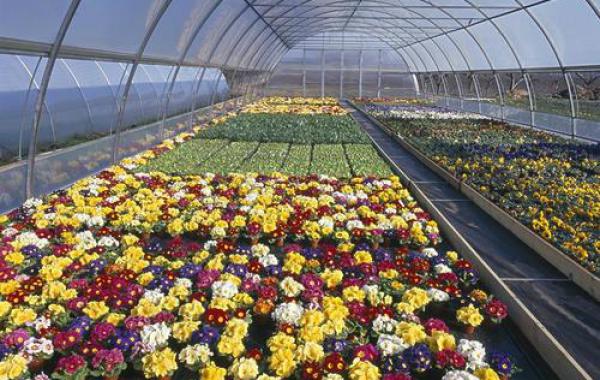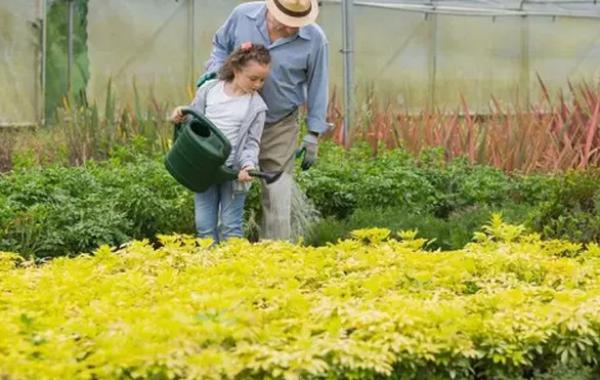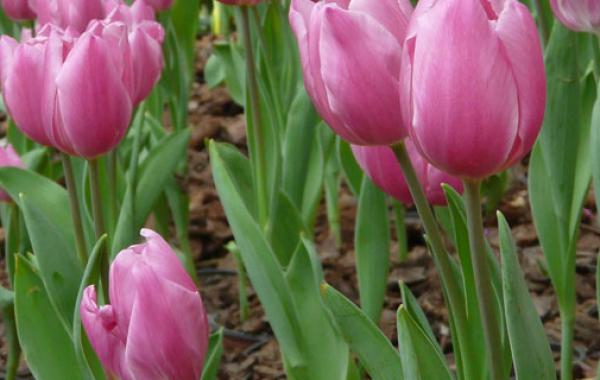How to manage the flowers in the greenhouse?

How to manage the flowers in the greenhouse.
Flowers can not only be used to appreciate, but also play a role in purifying living space. Flowers have gradually become a medium to convey friendship and express wishes in interpersonal communication, and people often regard it as a symbol of happiness, auspiciousness and friendship. In recent years, greenhouse flower cultivation has developed rapidly, but there are some misunderstandings in the management process of producers, which need to be treated correctly.
Excessive fertilization of flowers in greenhouse
Excessive fertilization at one time increases the concentration of soil solution, causes reverse osmosis and root injury of flowers, and the partial application of chemical fertilizer, especially nitrogen and phosphate fertilizer, leads to the imbalance of flower nutrition.
Pay attention to regulating the ratio of base fertilizer to topdressing, do not apply too much fertilizer at one time, apply sufficient base fertilizer and appropriate topdressing, and increase the application of organic fertilizer, because organic fertilizer can not only improve the soil structure, but also make the fertilizer effect release steadily and slowly, and adjust the acidity and alkalinity of the soil. The depth of hole application or strip application should be more than 5 cm, and keep a distance of about 10 cm from the root of flowers. Skillfully using high concentration, all-element compound fertilizer or microbial compound fertilizer, the solubility, absorption and utilization rate are very high, and it is suitable for drip irrigation, sprinkler irrigation and foliar spraying, and the performance is stable.
The density of flowers in greenhouse is too high
Many flower growers think that the density is too thin to affect the yield, and they are often reluctant to leave the seedlings when the flowers are left behind, and think that only close planting can achieve high yield. In fact, reasonable planting density is conducive to flower growth, excessive close planting is not conducive to increase yield, but also affects the improvement of quality and economic benefits.
To determine the planting density, we should consider the flower varieties, soil conditions, climatic conditions and cultivation techniques, and take reasonable sparse planting as the principle. Dwarf short-branch woody flowers and herbaceous flowers, deep and fertile soil conditions, summer and autumn with better light and hot water conditions, and higher technical level of greenhouse cultivation and management can be denser in the above cases. In order to make full use of the space in the shed, the management methods of close planting in the early stage, thinning plants in the middle stage and thinning branches in the later stage can be adopted to improve the overall yield and comprehensive benefit of flowers.
The temperature of flowers in greenhouse is too high.
Many flower farmers think that the purpose of building a shed is to increase the temperature and keep warm. If the temperature is high, the flowers will grow fast. In fact, flowers have upper temperature requirements, generally 20 ℃ to 25 ℃, and a few 25 ℃ to 30 ℃. If more than 30 ℃, the respiration of flowers will be large, resulting in excessive plant growth, imbalance in the growth of branches, leaves and flowers and fruits, and the benefit will decrease.
The solution is to set up an air outlet in the shed, open and close the temperature in time, and manage it strictly in accordance with the temperature requirements of different kinds of flowers and plants during the growing period, as well as the special requirements for the temperature of each organ during the growing period. to prevent excessive temperature from overgrowing branches and leaves and poor flower and fruit growth affecting the quality of the whole plant. It is necessary to closely combine the adjustment of the temperature of the shed with the solution of ventilation and ventilation, so as to prevent the occurrence and harm of harmful gases caused by high temperature and humidity, easy to breed diseases and insect pests, and poor ventilation.
The flowers in the greenhouse are too prosperous.
Most people think that the flourishing branches of flowers are good, so they water more and fertilize more to promote the growth of flowers. As everyone knows, more water, more fertilizer, more branches and leaves are exuberant, which may also cause shallow, dry and weak roots and incomplete nutrition. Excessive growth, so that the intensity of vegetative growth is too large, is bound to affect the intensity of reproductive growth, the overall output may not rise, but the overall quality will decline.
The solution has the following two points. First, it is necessary to lay the foundation for good root growth in the flower seedling stage, and control water, fertilizer and plant control, so that the underground part absorbs more than half of the photosynthate, and in the middle and later stage of flower growth, the absorption of underground and aboveground parts accounts for about half. Second, the nutrient consumption of the plant in the early stage accounts for about 60%, the reproductive growth accounts for about 40%, the middle stage accounts for about 50%, the later reproductive growth accounts for 60% to 70%, and the vegetative growth accounts for 30% to 40%, that is, to ensure that there is a certain assimilation leaf area in the early stage, and to control leaves to promote fruit and strong plants in the later stage, in order to improve yield and efficiency.
The flowers in the greenhouse were drugged too frequently.
In the middle and later stages of flower growth, many flower farmers apply pesticides every few days, believing that frequent use of pesticides can prevent the growth and spread of diseases, pests and weeds, but the actual result is not the case. If pesticides and fungicides are used too frequently, diseases and insect pests will produce drug resistance, which will need to be increased, which will easily lead to drug damage, re-rampant disease and insect pests, and environmental pollution, resulting in a vicious circle.
To solve these problems, one is to prescribe the right medicine, to choose drugs that can not only kill diseases and insect pests, but also conducive to the growth of flowers; second, to switch to pesticides with high efficiency and low toxicity, and to reduce the concentration as far as possible to avoid drug damage; the third is to improve and optimize the ecological environment of the shed to promote the healthy growth of flowers to improve resistance; fourth, do not spray under the conditions of high temperature and high humidity, pay attention to reasonable mixed use to avoid evaporation and loss of liquid medicine.
There are too many flower stubble in greenhouse.
Many flower farmers believe that the construction of shed investment, can not let the land idle, so the secondary stubble followed the main stubble, the main stubble interplanting secondary stubble, planting stubble too many times, but the result is not high.
To solve the problem of flowers and plants in the greenhouse, there are the following points: first, for most annual grass and flowers, it is better to overwinter one crop a year, and it is better to plant one crop a year in spring and autumn, and some varieties can continue to harvest one crop and pull out the air when the price is low; the second is to leave a period of time every year in summer and autumn to deeply turn over the soil in the greenhouse, rain, press salt, and expose to sterilization, kill insects in the shed, mature the soil, and save fertility.
I. overwintering cultivation and management of dormant flowers
When potted camellias, rhododendron, brown bamboo, gardenia, Michelia and Midinghong are cultivated in the Yangtze River valley, as long as they are protected, they can safely survive the winter in dormancy, and when they are cultivated in greenhouse in the north, when they enter the greenhouse in winter, they should pay attention to ventilation and exhaust in sunny days, so as not to break the dormancy period when the temperature in the shed is too high. After breaking the dormancy period, the flowers entered the growth state, the cold resistance and disease resistance decreased greatly, and the freezing injury was very easy to occur. If you want to promote the flower and advance the florescence, you can use the method of heating up to break dormancy.
II. Cultivation and management of flowering flowers in winter or early spring
When early spring flowers such as primrose, melon-leaf chrysanthemum, balsam, calla lily and cyclamen overwintered, the temperature in the shed should be kept at 15: 20 ℃ during the day and 5 ℃ at night. When the temperature in the shed is too high, it should be ventilated in time; when it is too low, it should be heated by means of flue fire Kang or burning liquefied petroleum gas. Cover the grass in time in the evening to ensure that the temperature of the shed can not be lower than 0 ℃ in the coldest "39" season.
3. Overwintering cultivation and management of high temperature flowers
Cactus, pineapple, tropical orchid, variable leaf wood, dragon blood tree and other temperature-loving flowers, overwintering should be covered with multi-layer heat preservation, appropriate temperature increase. A small arch shed can be built in the plastic greenhouse, and the flowers can be placed in the small arch shed to survive the winter. The walls should be thickened, surrounded by grass curtains, covered by double-layer grass curtains on the outside of the greenhouse, and heated and insulated by reflective curtains in the greenhouse. Pay attention to the adjustment of the distance between the small arch shed and the greenhouse film. According to the measurement, the "heat preservation effect" is the best when the distance between the double-layer plastic films is about 10 cm. Thermoelectric method and boiler flue method can be used to increase the temperature in the shed. In a clear day, ventilation and exhaust should be done in time when the temperature in the shed reaches more than 25 ℃, so as not to cause injury.
IV. classified management in accordance with flower conditions
Different varieties of flowers have different physiological needs. To meet the physiological and growth needs of different flowers, they should be placed at room temperature, in different regions and in different types. The same variety, the same type of flowers are placed in the same greenhouse, because the same area is in a greenhouse, the flowers with good lighting, strong light, high temperature and liking temperature in the south can be placed on the south side of the greenhouse; the light in the north is weak and the temperature is low, so, dormant flowers should be placed on the north side.
Fifth, control the greenhouse to survive the winter safely
The air humidity in the greenhouse is high, and the temperature difference between day and night is large. Excessive temperature and humidity can lead to the occurrence of flower fungal diseases, such as black spot, powdery mildew and so on. Too low humidity can cause flower wilting and sunburn leaf curling phenomenon. Therefore, it is necessary to control the temperature and humidity, water and fertilize reasonably. Such as dormant flowers, to stop fertilization, control watering, make it "dry and wet", timely ventilation and seedling refining, so that the plant can survive the winter safely and blossom at the right time.
Related
- What if the leaves of potted flowers turn yellow?
- Florescence Control of several Flowers
- Anti-freezing technology and post-freezing nursing technology of flowers
- What is the classification of flowers? What are the common methods of flower classification?
- Prevention and control of alkali and acid damage of flowers in courtyard
- Technology of Anti-freezing and restoring growth of Flower seedlings in greenhouse and greenhouse
- How does flower fertilization not hurt the root? Fertilization technology of flowers
- Key points of disinfection in flower greenhouse
- Several pesticides that are banned or used cautiously in flowers
- How to fertilize the flowers that watch the leaves?



